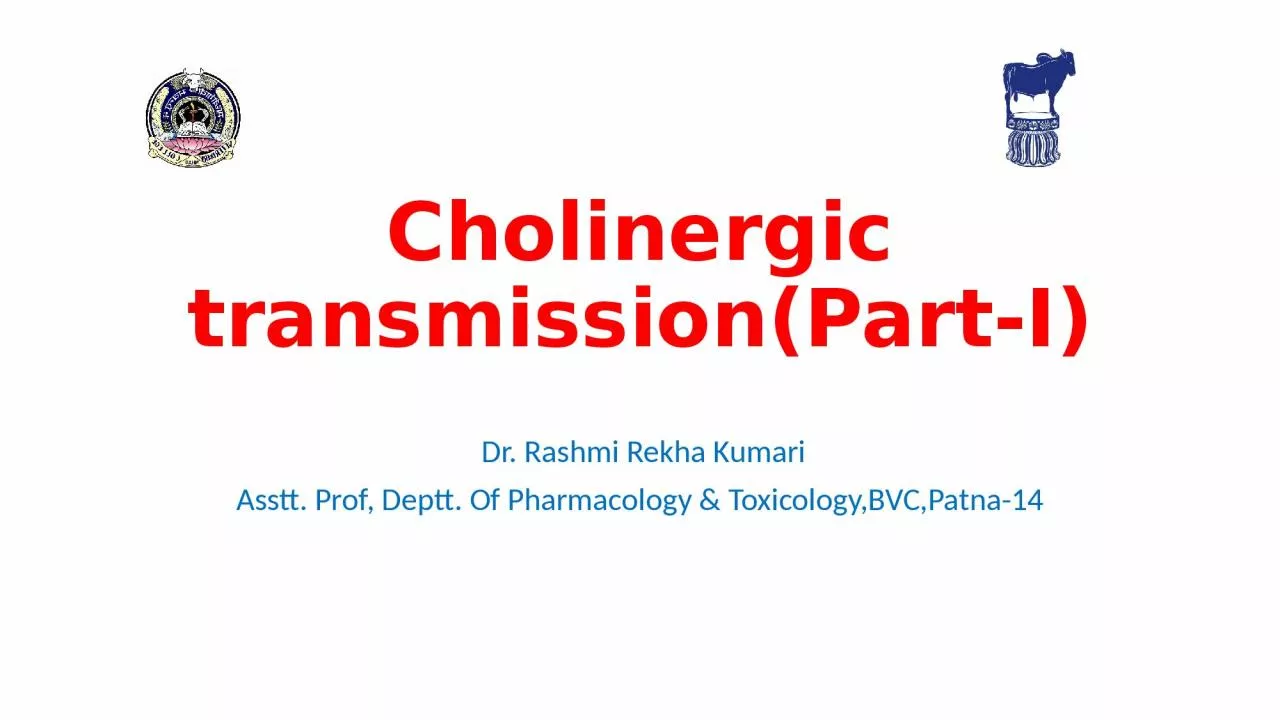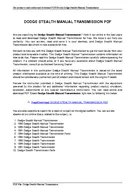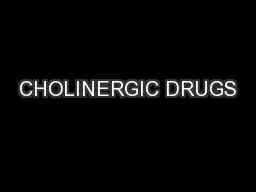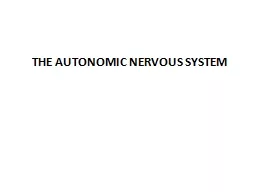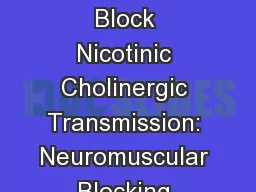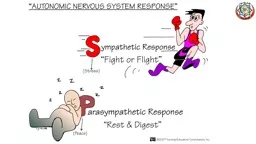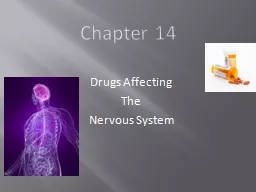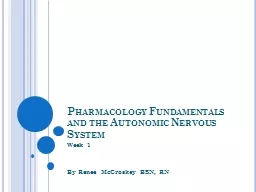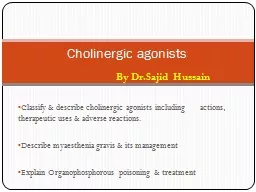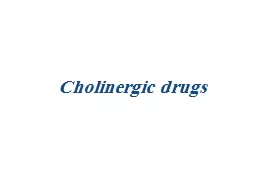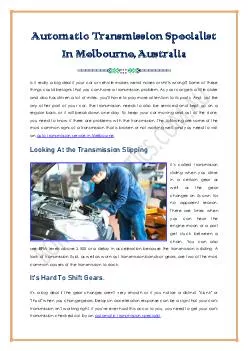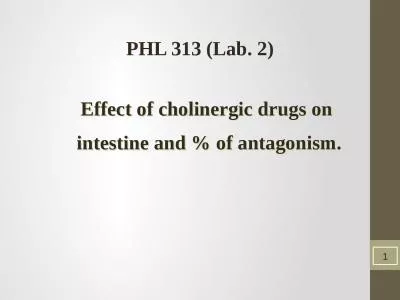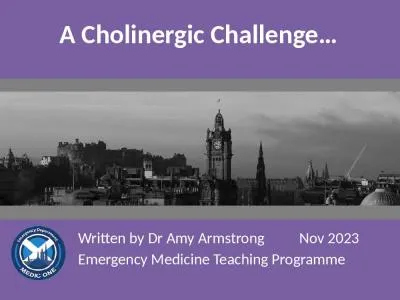PPT-Cholinergic transmission(Part-I)
Author : BraveBlackbird | Published Date : 2022-08-04
Dr Rashmi Rekha Kumari Asstt Prof Deptt Of Pharmacology amp ToxicologyBVCPatna14 Cholinergic transmission Neurohumoral transmission either at synapse or neuroeffector
Presentation Embed Code
Download Presentation
Download Presentation The PPT/PDF document "Cholinergic transmission(Part-I)" is the property of its rightful owner. Permission is granted to download and print the materials on this website for personal, non-commercial use only, and to display it on your personal computer provided you do not modify the materials and that you retain all copyright notices contained in the materials. By downloading content from our website, you accept the terms of this agreement.
Cholinergic transmission(Part-I): Transcript
Download Rules Of Document
"Cholinergic transmission(Part-I)"The content belongs to its owner. You may download and print it for personal use, without modification, and keep all copyright notices. By downloading, you agree to these terms.
Related Documents

